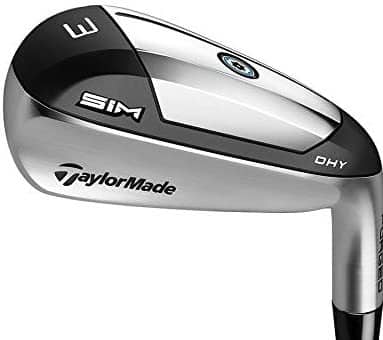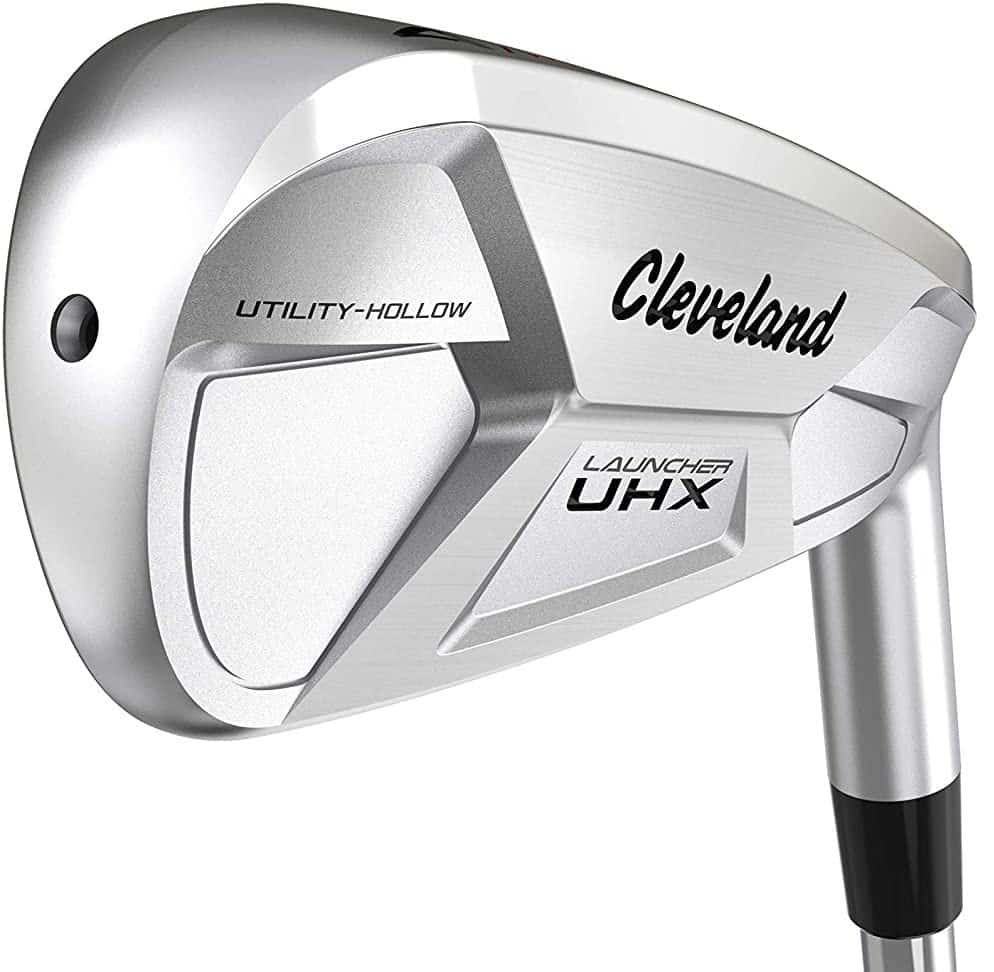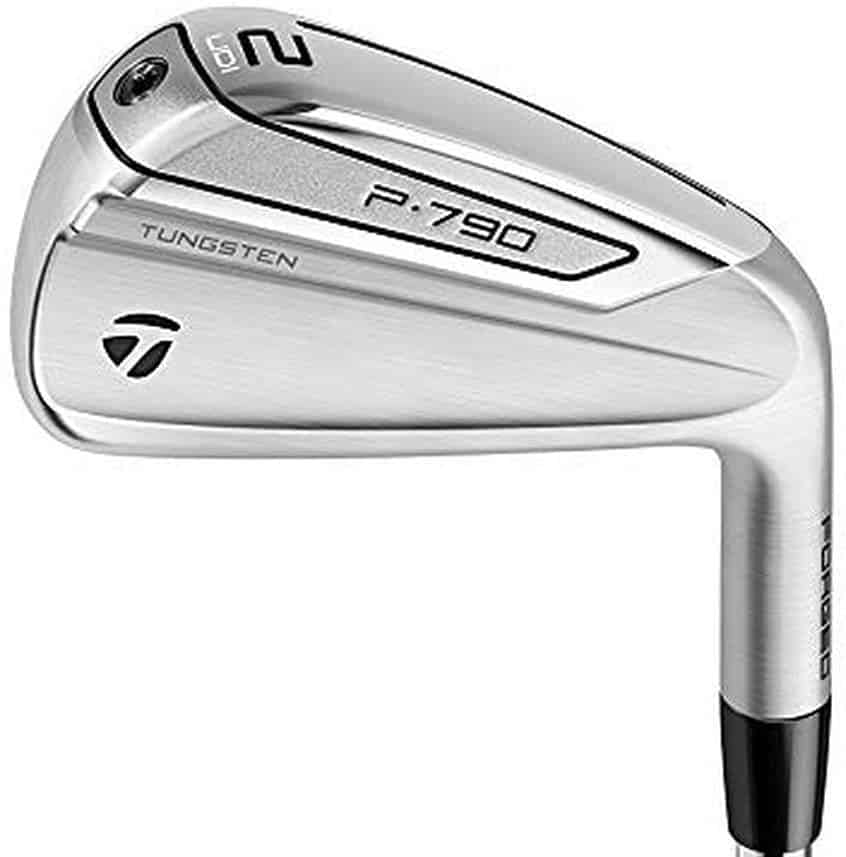In the uniquely late November version of the 2020 Masters, Champions Tour regular Bernhard Langer caught the attention of many pundits with his remarkably strong showing.
Finishing 29th overall, the 63-year-old German’s accuracy accounted for shortcomings in length, with the big bombers like Rory McIlroy and Bryson DeChambeau outperforming him by dozens of yards off the tee with driver in hand.
On at least a couple of par fours, Bernard required driver then 3-hybrid to match Bryson’s driver-wedge combo in a true display of how far distance has come along in the game.
Bernhard’s run, however, also sparked another interesting talking point about hybrids on the PGA Tour and, more specifically, about how more players are starting to use them.
For years now, hybrid clubs have been sold to millions of weekend hackers who struggle to strike their long irons (check out our top picks for hybrids here), but an increasing number of pros are also adding them to their bags.
So, what is the answer to the question: do golf pros use hybrids?
Golf pros are increasingly using hybrids on tour. While some pros still prefer gaming long irons because of their better workability, a growing number of players are turning to hybrids due to their versatility and forgiveness from all lies.
So if you’re not on the PGA Tour (which is almost guaranteed if you’re reading this) and struggle hitting your long irons, then a hybrid might be the perfect solution for you.
In the rest of this article, we’ll explain more about hybrids, including their advantages and disadvantages compared to long irons, and delve deeper into why more professional players are using them.
Table of contents
What is a hybrid club in golf?
Hybrids are a ‘rescue club’ designed to help golfers who struggle hitting long irons, with their wide sole making them more forgiving – but less workable. Hybrids glide through the rough easier than long irons, improving quality of strike, with their bigger base also helping get the ball into the air easier.
Professional golfers have no problem hitting long irons, and can shape them left, right, high or low through the air, and their better workability means they are the preferred option for a lot of players.
However, other PGA Tour competitors may look to use hybrids because of their versatility and forgiveness, but also on courses where the greens are firm – as hybrids tend to have a higher launch trajectory through the air, meaning they often land softer and have a better chance of holding the putting surface.
Why might somebody need a hybrid?
Hybrids are a great substitute for players who struggle to hit their long irons. The wider sole makes it easier for the average player to make solid contact with the ball, and the larger clubhead can also improve a player’s confidence as addressing the ball with a long iron can be quite daunting.
While some golf sets, especially women’s sets, can incorporate hybrids up to the level of a six-iron, most hybrids cater to people needing a more hittable alternative to a 3 or 4 iron.
The reason why many golfers struggle with longer irons is due to their lack of forgiveness (check out our list of most forgiving irons here).
The lower loft places a greater emphasis on contact and strike, meaning the slightest of mis-hits can end up in a poor-quality result.
Many average golfers also find it difficult to hit down on or compress the ball, and hybrids promote a high launch for golfers with a ‘sweeping’ swing, getting the ball in the air rather than chunked or thinned along the ground.
Hybrids also perform quite well out of the rough, with their flat, wide bottom gliding through tall grass, whereas a long iron may become tangled.
Without adequate power to drive an iron through a heavy lie, many golfers will not see a result as good as that which could be achieved with a hybrid club.

Which golf pros use hybrids?
Collin Morikawa, Jordan Spieth, Dustin Johnson, Patrick Reed and Webb Simpson are just some of the pro golfers on the PGA Tour who have been known to use hybrids. While they don’t game them every week, they have added them to their bag in the past depending on the course and conditions.
When you think that all five of those players are major champions, it creates a pretty strong argument that amateur golfers should strongly consider using hybrids.
Below are the hybrids each player games, most of which are available on Amazon (click each link to check the price):
Collin Morikawa: TaylorMade SIM Max (19 degrees)
Jordan Spieth: Titleist 818 H2 (21 degrees)
Dustin Johnson: TaylorMade SIM Max (either 19 degrees of 22 degrees)
Patrick Reed: Ping G410 and Callaway Apex (20 degrees)
Webb Simpson: Titleist 913Hd (20 degrees) and a Titleist 915Hd (23.5 degrees)
Should I carry a 5-wood or 3-hybrid?
There is very little difference between a 5-wood and a 3-hybrid. Both usually have between 17-19 degrees of loft, along with wider soles and greater clubhead dimensions than your standard long iron. In the end, it comes down to personal preference as both clubs perform virtually the same.
If you enjoy using mid-irons, a step up to a hybrid is probably going to feel right for you.
If you enjoy hitting a 3-wood or are even confident with your driver, the larger head of the 5-wood might fill you with confidence and be the option for you.
Another deciding factor is versatility, and for the average golfer, the budget you have to spend on golf clubs can have a large impact on what goes in the bag.
A 5-wood might be the same loft as a 3-wood, but outside of tee shots and fairway lies, the 5-wood’s flexibility might be left in the 3-hybrid’s wake.
Not only can a 3-hybrid be played from the fairway or off the tee, but the smaller head will cut through rough better and even be an option from a shallow bunker if you are feeling aggressive.
If you have the choice of one or the other and feel more or less the same with either in hand, a 3-hybrid might offer more bang for your buck.
What are the easiest hybrids to hit?
The hybrids with the highest degrees of loft are going to be the easiest to hit. Just as a 9-iron is easier to hit than a 5-iron, a 4-hybrid is going to be easier to hit than a 2-hybrid, for example.
Generally, as the loft of a club decreases, the difficulty of hitting it increases, so a 5-hybrid is going to be a highly-forgiving option when compared to, say, a 5-iron.
Beyond this, it really shouldn’t be a consideration to swap irons out for hybrids, as the spin and grip required to hold the green will be highly compromised, even if your strike is improved.
If the weight and speed requirement of longer irons is what makes you struggle, then thin-faced, lightly-shafted hybrids will be easier to swing, helping you launch the ball high into the air without fatiguing your body.
Some hybrids also employ railing or technology on the sole of the club that supports positive turf interaction so the club enters and exits the ground consistently, launching the ball high.
A hybrid such as the Cobra T-Rail is considered by many to be a good combination of the factors offering forgiveness in a hybrid club.
What are the best hybrids on the market?
Outside of the Cobra SpeedZone, there are a range of hybrid clubs to suit all price ranges and abilities.
Taylormade SIM Max Hybrid (Our Top Pick)

TaylorMade’s SIM range doesn’t come cheap, but the hefty price tag is a minor imposition for the thousands of golfers who swear by its quality.
The Taylormade SIM Max Hybrid’s low centre of gravity promotes a high launch, offering some of the most impressive distance on the market from a hybrid club.
Cleveland Launcher HB Hybrid (Best Value)

Renowned more so for their wedges than longer clubs, Cleveland’s Launcher HB Hybrid is a well-priced, well-performing alternative for those with a tighter budget.
While the length and feel might not be as strong – something that will turn away lower handicappers – the Launcher HB is a reliable club that does well in poor lies.
Taylormade SIM DHY (Best Alternative)

Part hybrid, part driving iron, the TaylorMade SIM DHY fits the gap between long iron and hybrid golf club (if that even existed).
Despite looking somewhat like an iron, the hollow body provides a low and deep centre of gravity, promoting a mid to high launch.
Versatility is also a welcome inclusion, as the loft is adjustable +/- 2 degrees.
How are pros so good with long irons?
Pros hit their long irons better than all other golfers on the planet due to the considerable time they dedicate to practice. The daily training helps them optimise their attack angle, swing path, and ball position when using long irons which, over the course of many years, has allowed them to become elite ball-strikers with longer clubs.
Pros play golf for a living and, despite what you might like to believe, every part of their game is considerably better than the average player.
Hence, it’s inevitable that their long iron game, despite these being highly unforgiving clubs, will be levels above that of a weekend warrior.
Ball striking aside, there is one key piece of artillery in their arsenal that puts them a cut above in the long iron game: speed.
Many pro golfers are not only sublime strikers of the ball, but their swing speed is well above that of the amateur golfer.
A high swing speed is vital in getting that 3-iron soaring off the deck, something an average player would need a hybrid or even 5-wood to somewhat replicate.
It is important to note, though, that not all pro golfers are created equal and there are plenty out there who don’t match it with the longer hitters.
Webb Simpson, for example, is a step below Bryson and Rory in the speed and length department, perhaps explaining why he once won the Waste Management open with not one, but two hybrids.
So, despite their relative unpopularity, there is still a market for hybrids on the PGA Tour.
Why do pros prefer long irons over hybrids?
Some golf pros prefer long irons over hybrids due to their better workability. Because long irons have a slimmer clubface, it allows pro golfers to impart spin on the ball easier – meaning they can shape the ball left or right through the air with ease. Hybrids, while they are more forgiving, are harder to work the ball with due to their wide sole and larger clubhead.
Where hybrids can be superior to long irons is their versatility. They are good out of bunkers and the rough, and can be a safe option off the tee (much like a driving iron).
But compared to long irons, they are much harder to shape – whether it be fade, draw, low or high shots – and generally produce a repeatable trajectory.
US Open champion Gary Woodland can punish a stinger three metres off the ground under the pressure of a Carnoustie headwind using a long iron, but trying to do the same with a hybrid is far more difficult due to its design.
With the 14-club limit feeling incredibly tight for may pros, considering the number of wedges they often carry, a one-dimensional club could be considered burdensome when compared to a club that gives them options and can be used in multiple different ways.
What if I want to try a driving iron?
Let’s face it, a large part of golf is about looks.
What’s in your bag should make you feel good, and despite the forgiveness hype, if you get good energy from rocking a 2-iron, or a utility/driving iron, why not give it a crack?
Here are a couple of the best driving irons on the market (you can check out our full list here).
Cleveland Launcher UHX Utility Iron

Boasting a hollowed-out body and V-shaped sole for turf interaction, the Cleveland Launcher UHX Utility Iron is both long and forgiving – two things almost every golfer is looking for.
The variable high-strength steel face performs well with both heel and toe strikes, promoting optimum flight from average contact.
Taylormade P790 UDI

One of the best driving irons on the market, the Taylormade P790 UDI uses a tungsten weight to lower the centre of gravity and promote launch on strikes from low on the face.
A Thru Slot Speed Pocket also assists low strikes to maintain ball speed and performance.
Check out our article reviewing the 9 Best Driving Irons You Can Buy here.
Final message
Pros are by no means allergic to hybrids and many have gamed them in the past with great success.
However, since the pros are so much better than the average golfer, they don’t necessarily need the forgiveness hybrids provide – forgiveness that is often delivered at the expense of workability.
With every one of their 14 clubs needing to be valuable and versatile, pros are more likely to go with a flexible long iron rather than a one-dimensional hybrid – however, they will often interchange them depending on the course they’re playing, or the conditions.
Regardless of what the pros choose to do, mere mortals like you and I are likely to see hybrids as a forgiving and useful club – well worth the addition to any weekend warrior’s bag.
- TaylorMade SIM2 Max Driver vs M4 Driver: Worth it in 2024? - April 15, 2024
- 3 Ways to Win the Mental Game with the Bridgestone Mindset Golf Ball - March 29, 2024
- TaylorMade SIM Max & SIM2 Max Drivers: Are they Still Relevant in 2024? - March 9, 2024


